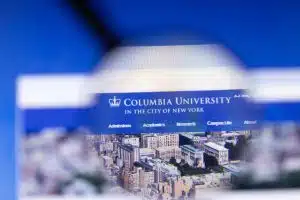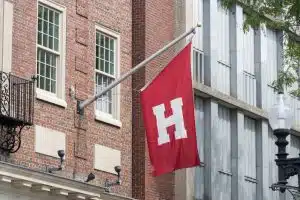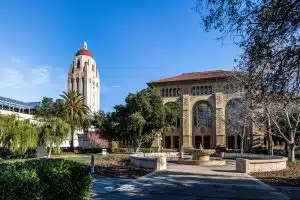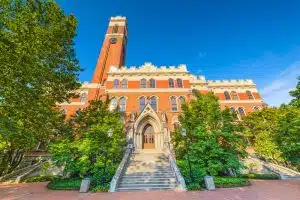What is MIT Known for?
If you’re wondering what MIT is known for, you’re not alone; the question is as intriguing as the institution itself. Don’t stop at mere curiosity—continue reading to find out the elements that make this place an epicenter of educational excellence. Get ready to explore how a unique blend of academic rigor, innovative thinking, and practical experience sets the stage for future leaders.
Understanding MIT’s Reputation
The History of MIT
MIT, the Massachusetts Institute of Technology, was founded in 1861 as a response to the rapidly expanding industrialization of the United States. Its mission was to promote scientific and technological advancements that would drive the nation forward. From its inception, MIT has consistently produced breakthroughs that have shaped the world we live in today.
One of the key factors that set MIT apart from other institutions was its commitment to hands-on learning. Unlike traditional universities at the time, MIT emphasized practical application and experimentation. This approach allowed students to directly engage with the material and apply their knowledge to real-world problems.
It was this emphasis on experiential learning that laid the foundation for MIT’s reputation as a leader in innovation and problem-solving.
Over the years, MIT has been at the forefront of numerous scientific and technological advancements, consistently pushing the boundaries of what is possible and defining what MIT is known for.
From the development of radar during World War II to the invention of the first computer spreadsheet, its faculty and students have been responsible for groundbreaking discoveries in fields such as artificial intelligence, biotechnology, and renewable energy.
MIT’s Global Influence
While MIT’s campus is located in Cambridge, Massachusetts, its influence extends far beyond the bounds of its physical location. Through partnerships with universities worldwide, MIT collaborates on research projects and shares knowledge with international scholars. These connections enable MIT to tackle global challenges by harnessing the power of diverse perspectives and fostering cross-cultural collaborations.
MIT’s global influence can be seen in its efforts to address pressing issues such as climate change, poverty, and healthcare. Through initiatives like the MIT Energy Initiative and the Abdul Latif Jameel Poverty Action Lab, MIT researchers work with partners from around the world to develop innovative solutions to these complex problems.
By bringing together experts from different disciplines and cultures, MIT is able to approach these challenges from multiple angles, leading to more comprehensive and impactful solutions.
Furthermore, MIT’s commitment to open access and knowledge sharing has not only benefited its students but also extended its influence globally. Through platforms like MIT OpenCourseWare, anyone with an internet connection can access course materials, lectures, and other educational resources developed by MIT faculty.
This commitment to democratizing education has helped foster a global community of learners and has contributed to what MIT is known for being a hub of knowledge and innovation.
Academic Excellence at MIT
Overview of MIT’s Programs
MIT, the Massachusetts Institute of Technology, is renowned for its commitment to academic excellence and innovation. With a wide range of programs across various fields of study, including science, engineering, humanities, and social sciences, MIT offers students a diverse and comprehensive education.
At MIT, the emphasis is not only on theoretical knowledge but also on practical application. The institute prioritizes hands-on learning, encouraging students to engage in real-world problem-solving and experimentation. This approach fosters critical thinking skills and prepares students to tackle complex challenges in their respective fields.
One of the unique aspects of MIT’s programs is the interdisciplinary approach. Students have the opportunity to explore different disciplines and integrate knowledge from various fields. This cross-pollination of ideas and perspectives leads to innovative solutions and breakthroughs.
Furthermore, MIT’s faculty members are world-renowned experts in their respective fields, embodying what MIT is known for—cutting-edge research and innovation. Students have the privilege of working alongside these distinguished professors, gaining invaluable mentorship and guidance. The close interaction with faculty members fosters a culture of intellectual curiosity and encourages students to push the boundaries of knowledge.
MIT’s Groundbreaking Research
Research is at the heart of MIT’s identity. The institute has a long-standing tradition of producing groundbreaking discoveries and innovations that have had a profound impact on society.
MIT’s laboratories have been the birthplace of numerous cutting-edge technologies. From the development of the World Wide Web to the creation of artificial intelligence, MIT researchers have been at the forefront of technological advancements.
The institute’s commitment to pushing the boundaries of what is possible has led to transformative breakthroughs that have revolutionized industries and improved the quality of life for people around the world.
However, MIT’s research extends beyond technological innovations. The institute also tackles complex global issues, such as climate change, poverty, and healthcare. MIT researchers collaborate with experts from various disciplines and institutions to develop sustainable solutions and address pressing societal challenges.
What sets MIT apart is its culture of open collaboration and the exchange of ideas. The institute actively promotes interdisciplinary research and encourages researchers to share their findings with the global scientific community. This commitment to openness and collaboration has not only accelerated the pace of scientific discovery but has also fostered a spirit of innovation and creativity.
In conclusion, MIT’s commitment to academic excellence, hands-on learning, interdisciplinary approaches, and groundbreaking research encapsulates what MIT is known for, making it a leading institution in the field of education and innovation. Students who choose to study at MIT not only receive a world-class education but also have the opportunity to contribute to the advancement of knowledge and make a positive impact on society.
Innovation and Entrepreneurship at MIT
MIT’s Role in Tech Advancements
MIT has been at the forefront of technological advancements, with its faculty and students driving innovation across various sectors. The institute has played a vital role in the development of fields such as artificial intelligence, robotics, biotechnology, and renewable energy. MIT’s research constantly pushes the boundaries of what is possible, shaping the technological landscape and driving progress in society.
One area where MIT has made significant contributions is in the field of artificial intelligence. Faculty members and researchers at MIT have developed groundbreaking algorithms and machine learning techniques that have revolutionized industries such as healthcare, finance, and transportation. These advancements have led to the creation of intelligent systems that can diagnose diseases, predict stock market trends, and optimize traffic flow.
In the realm of robotics, MIT has been instrumental in the development of cutting-edge technologies. The institute’s researchers have designed robots capable of performing complex tasks, such as autonomous navigation, object recognition, and human-robot interaction. These advancements have paved the way for applications in industries such as manufacturing, healthcare, and space exploration.
Furthermore, MIT’s contributions to the field of biotechnology have been groundbreaking. Researchers at the institute have made significant advancements in areas such as gene editing, drug discovery, and regenerative medicine. These breakthroughs have the potential to revolutionize healthcare by enabling personalized treatments, curing previously incurable diseases, and prolonging human lifespan.
MIT’s commitment to renewable energy research, a field in which the institute is particularly distinguished and showcases what MIT is known for, has had a profound impact on the world. The institute’s scientists and engineers have developed innovative technologies for harnessing solar, wind, and hydroelectric power.
These advancements have contributed to the global effort to reduce carbon emissions and combat climate change, paving the way for a more sustainable future.
Startups and Spinoffs from MIT
MIT’s culture of innovation has given rise to numerous startups and spinoffs that have had a significant impact on various industries. The institute encourages entrepreneurship and provides a supportive ecosystem for students and faculty members to pursue commercial ventures. Technologies developed at MIT have paved the way for successful companies, ranging from biotech startups to cutting-edge software companies.
One notable example of a successful startup that originated from MIT is Akamai Technologies. Founded by MIT professor Tom Leighton and his student Danny Lewin, Akamai revolutionized content delivery on the internet. The company developed a distributed content delivery network that improved website performance and reliability, enabling faster and more efficient access to online content.
Today, Akamai is a global leader in content delivery and cloud services, serving some of the world’s largest companies.
Another notable MIT spinoff is iRobot, the company behind the popular Roomba robotic vacuum cleaner. iRobot was founded by MIT roboticists Rodney Brooks, Colin Angle, and Helen Greiner, who developed the first commercially successful autonomous vacuum cleaner. The Roomba has since become a household name and has paved the way for further advancements in domestic robotics.
These are just a few examples of the many startups and spinoffs that have emerged from MIT’s vibrant entrepreneurial ecosystem. The institute’s commitment to fostering innovation and providing resources for commercialization has created a fertile ground for turning groundbreaking research into successful businesses.
Campus Life at MIT
When it comes to campus life at the Massachusetts Institute of Technology (MIT), there is no shortage of excitement and intellectual stimulation. MIT is renowned for its vibrant and dynamic environment, where students, affectionately known as “Techies,” come together from diverse backgrounds to embark on a journey of pushing the boundaries of knowledge.
One of the defining features of student life at MIT is the strong emphasis on collaboration. The institution actively encourages students to work together, fostering a sense of community and camaraderie. This collaborative spirit not only enhances the learning experience but also creates a supportive network where students can rely on one another for guidance and inspiration.
In addition to the stimulating academic environment that aligns with what MIT is known for, the institution offers a wide range of resources and support services to ensure a well-rounded student experience. From academic advising and counseling services to career development programs and health and wellness initiatives, MIT is committed to nurturing the holistic growth of its students.
Extracurricular Activities and Clubs
While the academic pursuits at MIT are undoubtedly rigorous, students also have ample opportunities to engage in a diverse array of extracurricular activities and clubs. These organizations cater to a wide range of interests, ensuring that every student can find a community that aligns with their passions.
For those inclined toward the world of technology and innovation, MIT offers a plethora of clubs dedicated to robotics, entrepreneurship, and cutting-edge research. Students can immerse themselves in projects that push the boundaries of scientific discovery and technological advancements.
However, MIT’s vibrant campus life extends far beyond the realm of technology. The institution boasts a thriving arts scene, with clubs and organizations dedicated to music, theater, dance, and visual arts. Students with a creative inclination can explore their artistic passions and showcase their talents through various performances and exhibitions.
Sports enthusiasts also have plenty of opportunities to get involved. MIT offers a wide range of competitive and recreational sports clubs, allowing students to stay active and pursue their athletic interests. Whether it’s joining an intramural team or participating in intercollegiate competitions, students can find their place in the world of sports at MIT.
Engaging in extracurricular activities and clubs not only allows students to pursue their passions but also helps them develop essential leadership skills. By taking on leadership roles within these organizations, students learn to manage teams, make strategic decisions, and effectively communicate their ideas.
Furthermore, participating in extracurricular activities provides students with opportunities to form lasting friendships with like-minded individuals. These friendships often extend beyond the boundaries of the campus, creating a network of support and camaraderie that lasts long after graduation.
In conclusion, campus life at MIT is a vibrant tapestry of intellectual stimulation, collaborative spirit, and diverse extracurricular pursuits. Students at MIT not only engage in rigorous academic pursuits but also have the opportunity to explore their interests, develop leadership skills, and form lifelong connections.
Notable Alumni and Achievements
Prominent MIT Graduates
MIT’s alumni community boasts many notable figures who have made significant contributions in their respective fields. From astronauts to Nobel laureates, MIT graduates have achieved great success and continue to make an impact in various industries. These accomplished individuals are a testament to MIT’s commitment to nurturing talent and fostering excellence.
Nobel Laureates from MIT
MIT has been the breeding ground for groundbreaking research that has garnered Nobel Prizes. Several alumni, faculty members, and researchers have received this prestigious award for their outstanding contributions to fields such as physics, chemistry, and economics. These awards further attest to MIT’s dedication to pushing the boundaries of knowledge and making a lasting impact on society.
In conclusion, MIT’s reputation as a world-renowned institution stems from its history of innovation and academic excellence. Through its groundbreaking research, unwavering commitment to collaboration, and nurturing of entrepreneurial spirit, MIT continues to make strides in various fields.
The institute’s influence extends beyond its campus, shaping the global technological landscape. MIT remains a beacon of innovation that inspires future generations to further the boundaries of human knowledge and tackle the world’s most pressing challenges.








































